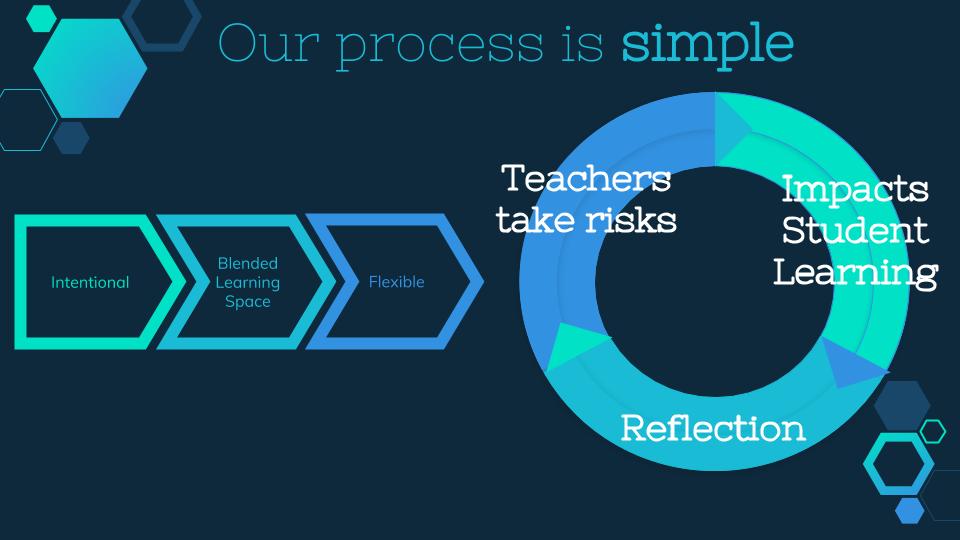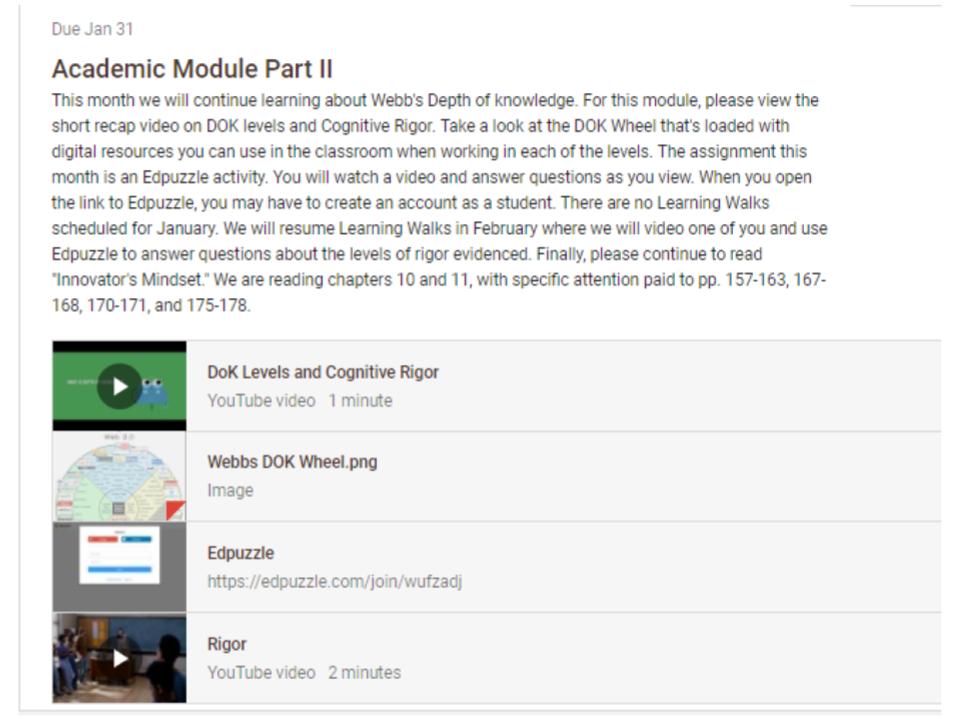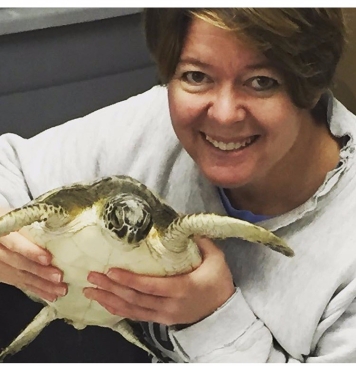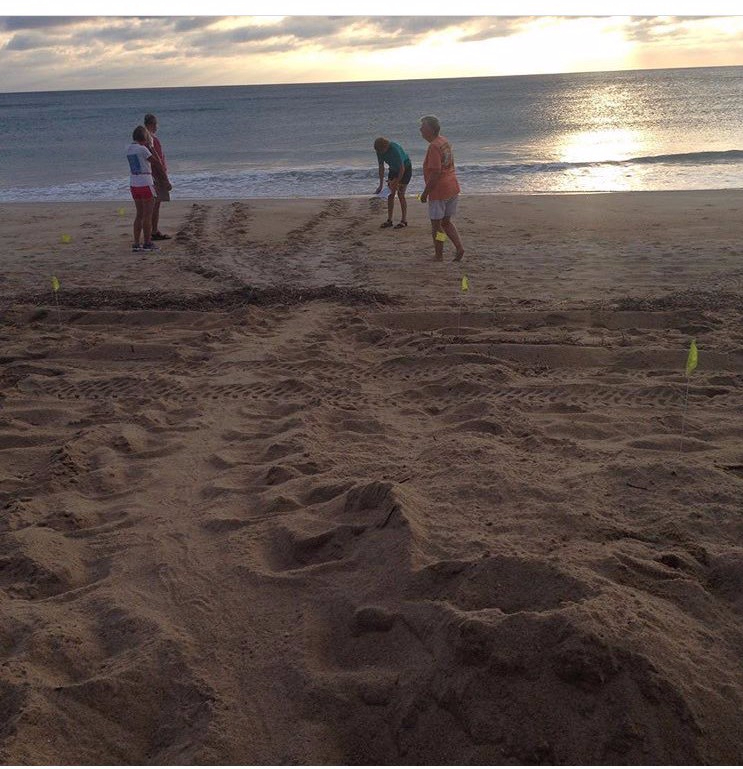Happy July! Typically, summer in my coastal world means lots of salt, sand, sun, surf, and tackling the ever-growing “home projects” list. While this summer is no different, I’m finding myself enjoying the beach alone – as my teenage girls have filled their days with athletic practices, summer jobs, and fun with friends. Who better to keep me busy than a massive pile of books – educational, leadership, beachy fiction, and YA? I’ve jumped in with both feet, and I am currently juggling several book studies on Voxer, Instagram, Facebook, and Participate. As expected, the conversation is rich with inspiring and creative ideas that I cannot wait to weave into my learning spaces next year.
Always eager to try something new, I am giving George Couros’s #InnovatorsMindset Instagram Book Study a go! Each time I read this text, different passages emerge as particularly important based on the learners that I serve at that point in time.
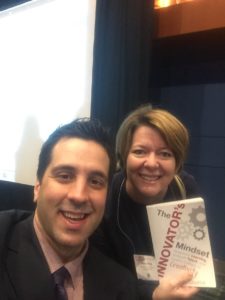 Why this book study? I love The Innovator’s Mindset, as this text served as a catalyst in changing my educational trajectory. Not only was it the professional read for #NCDLCN ’17, George Couros served as the keynote for that year’s NCTies Conference – where I was lucky enough to meet him! This text connected me with other educators, opening the door to many other texts… which sparked conversations, collaborative efforts, and exciting projects.
Why this book study? I love The Innovator’s Mindset, as this text served as a catalyst in changing my educational trajectory. Not only was it the professional read for #NCDLCN ’17, George Couros served as the keynote for that year’s NCTies Conference – where I was lucky enough to meet him! This text connected me with other educators, opening the door to many other texts… which sparked conversations, collaborative efforts, and exciting projects.
Week 1 did not disappoint. Here’s a recap of my posts:
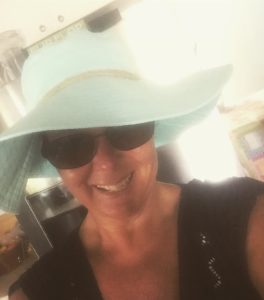
Innovator’s Mindset Day 01:
Checking in from OBX, NC – a secondary science teacher and lead digital designer. Through this book study, I hope to learn from passionate, innovative educators and expand my PLN. PD on vacay? IG + @gcouros for the WIN! #InnovatorsMindset #InnovatorsMindsetIntro
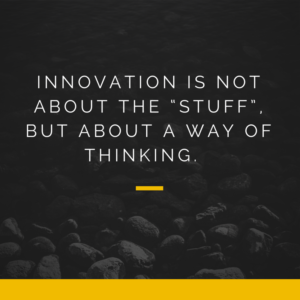 Innovator’s Mindset Day 02: Innovation does not require technology, supplies, or a novel strategy. Instead, it requires a complete shift in mindset. Swap a paper for a blog post. Create Ted-Talks instead of presentations. Solve a campus problem. Create opportunities for relevant work to present to an authentic audience that utilizes students’ voices. That’s innovation. #InnovatorsMindset #InnovatorsMindsetCh1
Innovator’s Mindset Day 02: Innovation does not require technology, supplies, or a novel strategy. Instead, it requires a complete shift in mindset. Swap a paper for a blog post. Create Ted-Talks instead of presentations. Solve a campus problem. Create opportunities for relevant work to present to an authentic audience that utilizes students’ voices. That’s innovation. #InnovatorsMindset #InnovatorsMindsetCh1
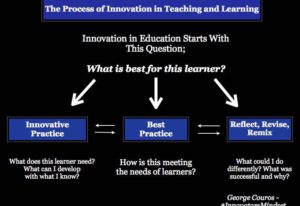 Innovator’s Mindset Day 03: Number 1 Question: What is best for this learner? followed by Would I want to be a learner in my own classroom? Have an honest self-reflection: What is working (or isn’t)? Survey your students. What can be tweaked? What needs to be tossed? Where can you turn for help in brainstorming ways to improve the learning experience for everyone in your learning space – including you? #InnovatorsMindset #InnovatorsMindsetCh2
Innovator’s Mindset Day 03: Number 1 Question: What is best for this learner? followed by Would I want to be a learner in my own classroom? Have an honest self-reflection: What is working (or isn’t)? Survey your students. What can be tweaked? What needs to be tossed? Where can you turn for help in brainstorming ways to improve the learning experience for everyone in your learning space – including you? #InnovatorsMindset #InnovatorsMindsetCh2
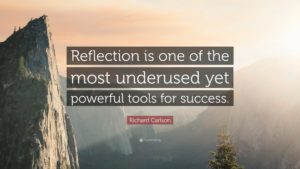
Innovator’s Mindset Day 04: Real life is messy, and real-life problem solving often requires many attempts. Teaching students to self-start through continuous evaluate begins with us. The end result is a generation of learners capable of solving ANY problem. #InnovatorsMindset #InnovatorsMindsetCh3
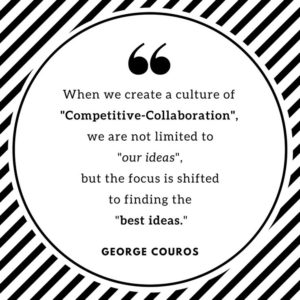 Innovator’s Mindset Day 05: Asking educators to embrace innovation requires a growth mindset, taking risks, and failing forward. For many, this is a huge challenge. Building deep relationships ensures a safe place to try new practices with minimal fear, judgment, or negative consequences. How do I start? I show my own vulnerability first. If I am the first to ask for help or fail, hopefully, others will follow. Remember, we are all learning together! #InnovatorsMindset #InnovatorsMindsetCh4
Innovator’s Mindset Day 05: Asking educators to embrace innovation requires a growth mindset, taking risks, and failing forward. For many, this is a huge challenge. Building deep relationships ensures a safe place to try new practices with minimal fear, judgment, or negative consequences. How do I start? I show my own vulnerability first. If I am the first to ask for help or fail, hopefully, others will follow. Remember, we are all learning together! #InnovatorsMindset #InnovatorsMindsetCh4
I nnovator’s Mindset Day 06: The initiative that I would most like to see is Professional Development FOR teachers BY teachers – tech tools, innovative strategies, book studies, everything. I model this through book studies like this that I participate in and share with colleagues + I am leading a district initiative that launches our first 10 courses later this year. #InnovatorsMindset #InnovatorsMindsetCh5
nnovator’s Mindset Day 06: The initiative that I would most like to see is Professional Development FOR teachers BY teachers – tech tools, innovative strategies, book studies, everything. I model this through book studies like this that I participate in and share with colleagues + I am leading a district initiative that launches our first 10 courses later this year. #InnovatorsMindset #InnovatorsMindsetCh5
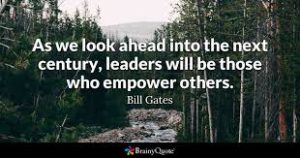 Innovator’s Mindset Day 07: I build leadership capacity in my students by providing them with a nearly unlimited amount of choice in my classroom – seating, pacing, order, grouping, environment, artifact of mastery. I also weave in Teacher Progress Reports that provide feedback for me based on what students think is most important – and, together, we problem solve ways to improve what they decide is not “up to par”. With feedback and reflection a two-way street, we all have ownership of the learning environment. #InnovatorsMindset #InnovatorsMindsetCh6
Innovator’s Mindset Day 07: I build leadership capacity in my students by providing them with a nearly unlimited amount of choice in my classroom – seating, pacing, order, grouping, environment, artifact of mastery. I also weave in Teacher Progress Reports that provide feedback for me based on what students think is most important – and, together, we problem solve ways to improve what they decide is not “up to par”. With feedback and reflection a two-way street, we all have ownership of the learning environment. #InnovatorsMindset #InnovatorsMindsetCh6
As I enter Chapter 7, I recognize how so much of this text applies far more than the students I serve. I am adding notes to my margins on how I can amplify voice in the volunteer organization where I serve, in encouraging more teachers to use their voices to share their innovative ideas, and in building the next generation of teacher leaders to continue to prepare our problem-solvers of tomorrow today.
Share your thoughts! I’d love to chat!
~~Holly

 Why this book study? I love The Innovator’s Mindset, as this text served as a catalyst in changing my educational trajectory. Not only was it the professional read for #NCDLCN ’17, George Couros served as the keynote for that year’s
Why this book study? I love The Innovator’s Mindset, as this text served as a catalyst in changing my educational trajectory. Not only was it the professional read for #NCDLCN ’17, George Couros served as the keynote for that year’s 
 Innovator’s Mindset Day 02: Innovation does not require technology, supplies, or a novel strategy. Instead, it requires a complete shift in mindset. Swap a paper for a blog post. Create Ted-Talks instead of presentations. Solve a campus problem. Create opportunities for relevant work to present to an authentic audience that utilizes students’ voices. That’s innovation. #InnovatorsMindset #InnovatorsMindsetCh1
Innovator’s Mindset Day 02: Innovation does not require technology, supplies, or a novel strategy. Instead, it requires a complete shift in mindset. Swap a paper for a blog post. Create Ted-Talks instead of presentations. Solve a campus problem. Create opportunities for relevant work to present to an authentic audience that utilizes students’ voices. That’s innovation. #InnovatorsMindset #InnovatorsMindsetCh1 Innovator’s Mindset Day 03: Number 1 Question: What is best for this learner? followed by Would I want to be a learner in my own classroom? Have an honest self-reflection: What is working (or isn’t)? Survey your students. What can be tweaked? What needs to be tossed? Where can you turn for help in brainstorming ways to improve the learning experience for everyone in your learning space – including you? #InnovatorsMindset #InnovatorsMindsetCh2
Innovator’s Mindset Day 03: Number 1 Question: What is best for this learner? followed by Would I want to be a learner in my own classroom? Have an honest self-reflection: What is working (or isn’t)? Survey your students. What can be tweaked? What needs to be tossed? Where can you turn for help in brainstorming ways to improve the learning experience for everyone in your learning space – including you? #InnovatorsMindset #InnovatorsMindsetCh2
 Innovator’s Mindset Day 05: Asking educators to embrace innovation requires a growth mindset, taking risks, and failing forward. For many, this is a huge challenge. Building deep relationships ensures a safe place to try new practices with minimal fear, judgment, or negative consequences. How do I start? I show my own vulnerability first. If I am the first to ask for help or fail, hopefully, others will follow. Remember, we are all learning together! #InnovatorsMindset #InnovatorsMindsetCh4
Innovator’s Mindset Day 05: Asking educators to embrace innovation requires a growth mindset, taking risks, and failing forward. For many, this is a huge challenge. Building deep relationships ensures a safe place to try new practices with minimal fear, judgment, or negative consequences. How do I start? I show my own vulnerability first. If I am the first to ask for help or fail, hopefully, others will follow. Remember, we are all learning together! #InnovatorsMindset #InnovatorsMindsetCh4 nnovator’s Mindset Day 06: The initiative that I would most like to see is Professional Development FOR teachers BY teachers – tech tools, innovative strategies, book studies, everything. I model this through book studies like this that I participate in and share with colleagues + I am leading a district initiative that launches our first 10 courses later this year. #InnovatorsMindset #InnovatorsMindsetCh5
nnovator’s Mindset Day 06: The initiative that I would most like to see is Professional Development FOR teachers BY teachers – tech tools, innovative strategies, book studies, everything. I model this through book studies like this that I participate in and share with colleagues + I am leading a district initiative that launches our first 10 courses later this year. #InnovatorsMindset #InnovatorsMindsetCh5  Innovator’s Mindset Day 07: I build leadership capacity in my students by providing them with a nearly unlimited amount of choice in my classroom – seating, pacing, order, grouping, environment, artifact of mastery. I also weave in Teacher Progress Reports that provide feedback for me based on what students think is most important – and, together, we problem solve ways to improve what they decide is not “up to par”. With feedback and reflection a two-way street, we all have ownership of the learning environment. #InnovatorsMindset #InnovatorsMindsetCh6
Innovator’s Mindset Day 07: I build leadership capacity in my students by providing them with a nearly unlimited amount of choice in my classroom – seating, pacing, order, grouping, environment, artifact of mastery. I also weave in Teacher Progress Reports that provide feedback for me based on what students think is most important – and, together, we problem solve ways to improve what they decide is not “up to par”. With feedback and reflection a two-way street, we all have ownership of the learning environment. #InnovatorsMindset #InnovatorsMindsetCh6